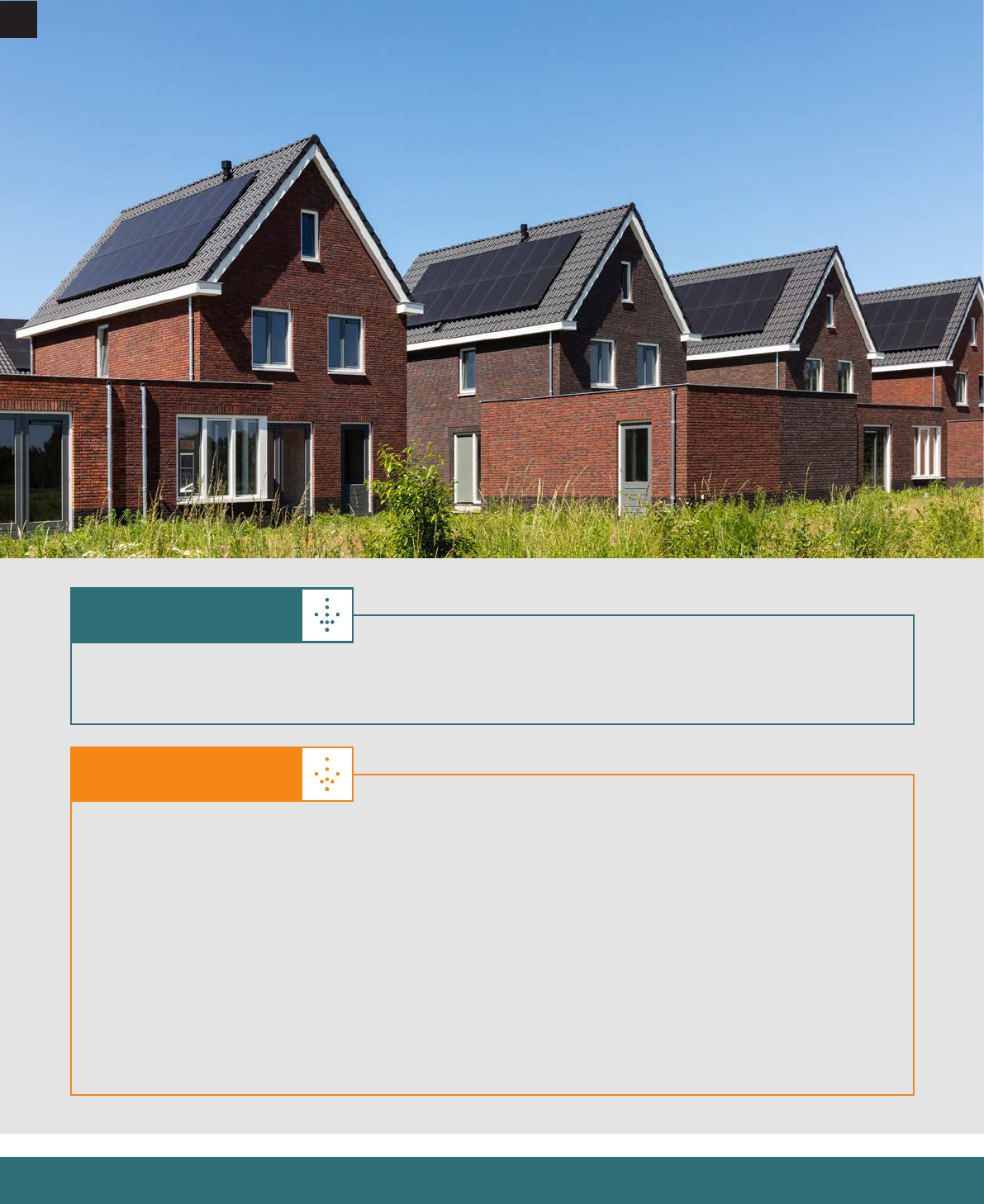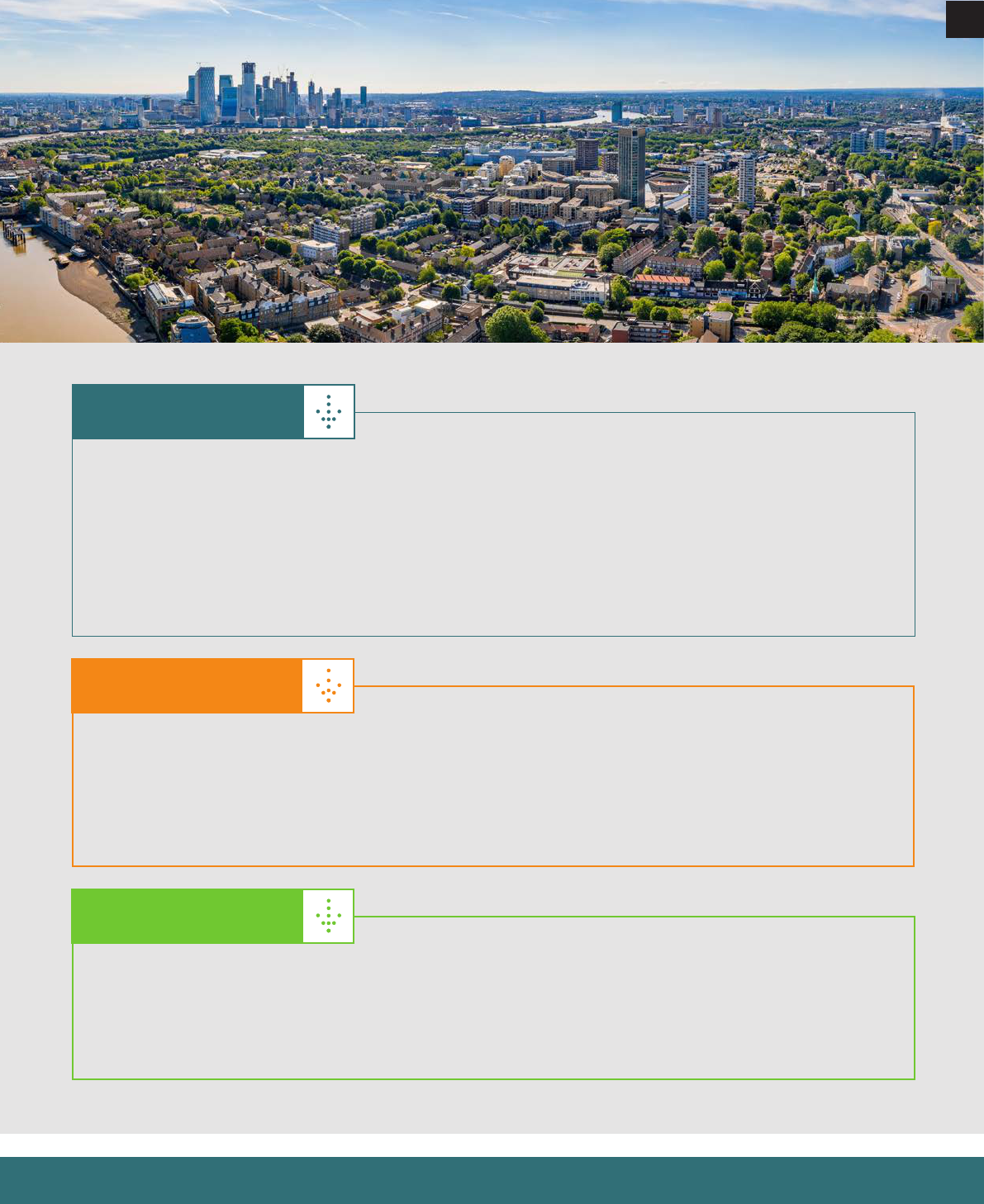
THE
ELMHURST
ALMANAC
2024
Driving progress during political change

The Elmhurst Almanac - Driving progress during political change
THE
ELMHURST
ALMANAC
2024
Driving progress during political change
2024 will not be a year of quiet. A general election and
momentous consultations for energy eciency are opportunities
for the UK to re-evaluate progress towards net zero.
Now is the time to make our industry’s expert voices heard.
2

www.elmhurstenergy.co.uk
Introduction
Stuart Fairlie, Managing Director, Elmhurst Energy
3
Energy efficiency was
never far from the
spotlight in 2023, but
2024 is likely to be
even bigger for our
sector.
As a prequel to this year of
political change, in December,
two of the most pivotal
consultations for home energy
performance in more than
a decade were launched by
Government.
The Future Homes and Buildings
Standards will help to define
how we build net zero carbon-
ready new homes and buildings
in England, while the Home
Energy Model (HEM) will set
how we measure home energy
performance, replacing the
current Standard Assessment
Procedure (SAP).
So much is yet to happen
between now and when these
are implemented in 2025,
including a General Election,
which may result in a change of
political direction.
This means energy efficiency
and net zero are likely to be two
of this year’s political footballs
and policy battlegrounds.
Let’s not forget Energy
Performance Certificates
(EPCs), for which 2024 is also
likely to be an important year
with, we hope, progress on
the Government’s EPC Action
Plan. Government has also
confirmed that the EPC ‘wrapper’
consultation will happen in
summer.
Elmhurst has long called for
EPCs to change so they do
more than simply estimate
the cost of heating a home.
We were pleased to see our
recommendations (to include
calculations for energy cost,
consumption and carbon
emissions) within the HEM
consultation. Earlier, in summer
2023, Scottish Government’s
EPC Reform consultation
also
got its proposals broadly right -
and now it’s time for the rest of
the UK to do the same.
From now until 2030 we must
start reducing the impact of
our homes and buildings on
the environment. To support
this, within these pages, we
have provided a list of top 10
policy and regulatory asks for
government. Each is aimed at
driving continual progress in
energy efficiency improvements
and measurement across UK
homes and buildings.
I firmly believe that the role
of energy efficiency, retrofit,
and building professionals, has
never been more important
than in 2024. Through these
consultations, we have an open
platform to spark discussion and
deliver expert views that will
shape the future. At Elmhurst,
we will continue to make our
voice heard and influence
decision makers to keep what
is right front and centre, rather
than just what will get the most
votes.
Take part in the debate -
contact us or post your views
on LinkedIn using the hashtag
#ElmhurstAlmanac

The Elmhurst Almanac - Driving progress during political change
Key facts and figures
£10.6
BILLION
is the aggregate saving
if all homes currently
rated D, E or F were
improved to EPC C.
(source: End Fuel Poverty
Coalition)
29%
increase in number of
homes reaching the highest
energy eciency bands
A to C in the last ten years.
(source: DLUHC)
51%
of Scottish
homes are EPC C
or above.
(source: Scottish
Government)
1
is the median increase to energy
eciency scores for houses in England
and Wales since 2022. (2022: England 67
Wales 65, 2023: England 68 Wales 66).
(source: Oce for National Statistics)
66
is the median
energy eciency score of a dwelling in
Wales (EPC D).
(source: Oce for National Statistics)
1,663,877
domestic EPCs were
lodged in England and
Wales in 2023.
(source: DLUHC & MHCLG)
1,459,281
EPCs lodged by Elmhurst members in 2023.
(Source: Elmhurst)
15,000+
registered Elmhurst members in 2023,
including competency scheme members.
(source: Elmhurst)
D
4

www.elmhurstenergy.co.uk
6.5
MILLION
UK households will be
in fuel poverty from
January 2024.
(source: National Energy
Action)
14%
of the UK’s carbon
emissions are
caused by housing.
(source: Great
Homes Upgrade)
3.8
MILLION
energy eciency measures were
installed in about 2.5 million properties
through ECO and other Government-
funded schemes between 2013-2023.
(source: Household Energy Eciency Stat
Release)
£7
BILLION
a year and 140,000 new jobs
could benefit the economy
by insulating homes and
installing heat pumps by 2030.
(source: Cambridge
Econometrics, presented by
The Guardian)
28%
of commercial buildings are
currently at risk of non-compliance
ahead of changes to Minimum
Energy Eciency Standards (MEES)
Regulations in England and Wales.
(source: Jones & Woolman,
presented by Property Reporter)
25%
of households in Scotland are in fuel
poverty, followed by 18% in Northern
Ireland, 12% in Wales, and 10% in
England.
(source: DESNZ & BEIS, presented by
Heatable)
5
7. 39
MILLION
(30.3%) households
in England spent
more than 10% of
their income on
energy bills in 2022.
(source: End Fuel
Poverty Coalition)
23%
of carbon
emissions across
the UK built
environment come
from commercial
buildings.
(source: UKGBC)

The Elmhurst Almanac - Driving progress during political change
2023 in policy and regulations
January
■ Chris Skidmore MP published the Mission Zero: Independent Review of Net Zero, assessing the
UK’s net zero policies.
February
■ Section 6 of the Scottish Building Standards came into force, meaning any new domestic or
non-domestic buildings are required to demonstrate compliance with Section 6 2022.
■ The Department for Business, Energy and Industrial Strategy (BEIS) was split into four new
government departments, one of which is the Department for Energy Security and Net Zero
(DESNZ), with its then Secretary of State Grant Shapps MP.
■ UK government announced a £32 million investment to upgrade existing heat networks, with the
aim of reducing energy costs and carbon emissions.
■ British Standards Institute (BSI) issued two public consultations on changes to the
PAS 51215-1 assessment process and the PAS 51215-2 competency of lead assessors for energy
and net zero assessments.
6

www.elmhurstenergy.co.uk
March
■ The government consulted on 'Improving boiler standards and eciency'.
■ BSI announced its consultation for proposed amendments to the current versions of PAS 2035.
■ DESNZ published its consultation response to the Great British Insulation Scheme (GBIS), formerly
known as ECO+, targeting the least energy ecient households.
■ The Future Homes Hub released its ‘Ready for Zero’ report delivering evidence from industry to
help inform the government’s development of the Future Homes Standard in England.
■ DESNZ released ‘Powering up Britain’, its plan for how government will deliver on net zero,
enhance energy security and seize economic opportunities arising from the transition.
April
■ The Royal Institution of Chartered Surveyors (RICS) consulted on the second edition of Whole
Life Carbon Assessments for the Built Environment, which mandates a methodology to track all
carbon emissions of built assets over their entire life cycle.
■ Government launched the ‘Heat Pump Investment Roadmap’, which includes the Boiler Upgrade
Scheme delivering household grants for installation.
May
■ Elmhurst responded to the BSI’s PAS 2035 consultation.
■ DESNZ announced a pilot scheme providing £4.1 million in funding to banks and loan providers
to develop green finance projects that will allow UK homeowners to improve the energy eciency
of their homes.
June
■ The Building (Scotland) Amendment Regulations were laid before Scottish Parliament, coming
into force on 1 April 2024 and requiring that all new homes and buildings no longer use direct
emissions heating systems.
■ Transitional arrangements for Part L 2021 of the Building Regulations ended, meaning all new
buildings, regardless of when the application was made, must now comply in England.
7

The Elmhurst Almanac - Driving progress during political change
July
■ Scottish Government released its new ‘EPC Reform’ consultation on proposed changes to Energy
Performance Certificates (EPCs).
August
■ Northern Ireland’s Department of Finance issued its consultation on Energy Eciency Upgrades
for Net Zero Future, covering revisions to Technical Booklets F1 and F2 of the Northern Irish
Building Regulations.
■ The Government published its consultation on Energy Company Obligation Schemes: Standard
Assessment Procedure (SAP) and Reduced Data SAP (RdSAP) amendments, proposing that both
ECO4 and the GBIS use the latest version of the SAP and RdSAP methodology.
■ Claire Coutinho MP became Secretary of State for DESNZ after a reshue sees Grant Shapps MP
become Secretary of State for Defence.
■ Welsh Government outlined its heat decarbonisation strategy in the Heat Strategy for Wales
document.
■ BRE confirmed changes to RdSAP Methodology, eective from 2024, which includes a
requirement to measure all windows and options for rooms-in-the-roof.
September
■ The Government published a consultation on proposed amendments to the Boiler Upgrade
Scheme Regulations.
■ The Government launched the £1bn GBIS, funding energy eciency improvements for 300,000
low council tax and poor energy performance homes.
■ Prime Minister Rishi Sunak delayed and diluted a number of key green policies, including
Domestic Minimum Energy Eciency Standards (MEES) Regulations.
■ Updated guidelines on the Energy Savings Opportunity Scheme (ESOS) were released by
government.
■ Elmhurst was awarded Home Decarbonisation Skills Training funding in Wave 2 to deliver
subsidised energy assessment and retrofit courses in England.
8

www.elmhurstenergy.co.uk
October
■ The updated version of PAS 2035 was published, featuring updates for retrofit professionals across
the UK.
■ The government confirmed that EPC targets under Non-Domestic Private Rented Sector (PRS) MEES
Regulations are not among those being revised by the Prime Minister.
■ The Energy Security Bill received Royal Assent to become UK law – the Energy Act 2023 will help
ensure bills are aordable in the long term.
November
■ Scottish Government launched a consultation proposing new laws that mandate the reduction of
emissions in Scotland’s homes and buildings, helping support the country’s drive to net zero
by 2045.
■ Welsh Government concluded its consultation on its Heat Strategy for Wales, designed to support
their commitment to achieve net zero by 2050.
December
■ DLUHC issued its Future Homes and Buildings Standards consultations, due to become
regulation in England in 2025.
■ DESNZ issued its Home Energy Model consultation to accompany the Future Homes Standard,
signalling the first major revamp to SAP in 30 years.
9

The Elmhurst Almanac - Driving progress during political change
The Future Homes &
Buildings Standards and
Home Energy Model
consultations:
what you need to know
Future Homes and
Buildings Standards
The Future Homes and Buildings
Standards consultation released
by the Department for Levelling
Up, Homes and Communities
(DLUHC) in December 2023
proposes changes for the
next revision of energy
eciency standards in Building
Regulations.
Due to come into force in
England in 2025, they will
facilitate the transition to net
zero in new domestic and non-
domestic buildings. Scotland,
Wales and Northern Ireland have
devolved powers to implement
similar standards and regulations
as and when they wish.
The Future Homes Standard
(FHS) delivers specifications
for new homes to almost
completely reduce emissions
related to heating, cooling and
energy use. These are some of
the highlights:
Notional dwelling options
The FHS proposes an Option 1
and Option 2 notional dwelling.
Both oer the same build
or fabric specifications and
adopt standards from Part L
(Conservation of fuel and power)
2021 of the Building Regulations,
but each delivers diering levels
of energy eciency.
Option 1 specifies use of a
decentralised mechanical
ventilation (dMEV) and high-
eciency solar PV panels, plus
an airtightness test result of
4. Option 2 proposes natural
ventilation with intermittent
extractor fans, an airtightness
test result of 5, and no solar PV
panels.
Measured energy performance
Proposals include a brand
or logo for housebuilders
to demonstrate new homes
comply with the FHS by testing
real-world energy performance
against modelled performance
at design stage. This is to tackle
the performance gap recognised
in Part L 2021.
Energy eciency metrics
The same metrics – Primary
Energy, Carbon Emissions and
Fabric Energy Eciency – used
to measure energy eciency of
a new build in Part L 2021 are set
to be used in the FHS.
Energy Use Intensity (kWh/m2/
year) was being considered but
has been set aside.
Material change of use
Any work on a building that
involves a material change of
use – usually a conversion such
as an oce block to residential
– will now be measured for
whole-dwelling performance
using a notional dwelling as
the benchmark. These will
require a Building Regulations
England Part L (BREL) report,
photographic evidence and
airtightness testing.
Transitional arrangements
There is usually a grace period
when new Building Regulations
are introduced for sites under
construction to switch over
to the new standard. The FHS
is consulting over a six- and
12-month transitional period
from when the regulations are
introduced, to when they come
into force. For any sites still
being built to Part L 2010 and
2013, homes not yet started one
year after the FHS is introduced
will also have to comply with the
FHS.
10

www.elmhurstenergy.co.uk
Home Energy Model
highlights
The Home Energy Model
(HEM) consultation from
the Department for Energy
Security and Net Zero (DESNZ)
accompanied the release of the
FHS consultation. It presents
the first complete overhaul
of the 30-year-old standard
assessment procedure (SAP)
energy eciency calculation
methodology.
The HEM deals with core
building physics and is designed
to deliver a more accurate
assessment of the energy
performance of homes.
‘Wrappers’
The HEM will be developed
alongside ‘wrappers’, which
will be determined by policy
and developed by Government
to support improvements in
housing and reaching climate
targets. The FHS ‘wrapper’ will
demonstrate compliance with
the standard, with the EPC
earmarked as the next. Each
‘wrapper’ is a dierent piece of
code using dierent data inputs,
such as home fabric, heating and
cooling systems, plus standard
inputs such as occupancy,
weather and temperature.
30-minute updates
Where SAP accounted for any
changes monthly, the HEM will
simulate energy performance
half-hourly. It will update
fuel prices, account for smart
technologies and systems, and
represent heat pumps in specific
contexts for a home rather than
relying on generic simulations.
Transparent methodology
The HEM codebase will be open
source, with any changes being
transparent and visible before
changes appear in regulation.
The code will replace the
specification document used for
the SAP. Software developers,
such as Elmhurst, will all have
the same version.
Home energy performance
calculator
A home energy performance
calculator is proposed as part of
the HEM. This will be a cloud-
based engine for software
developers to build interfaces
around.
Other changes in the
consultation for comment
include a new database to
improve information on product
characteristics, as well as a new
process for replacing ‘Appendix
Q’. This is so more new
technologies can be eciently
included in the HEM.
Both consultations are open for
comment until 6 March 2024.
We’d encourage all energy
eciency professionals to take
the opportunity to have their
voice heard.
11

The Elmhurst Almanac - Driving progress during political change
12
Elmhurst’s 10 big asks for 2024
These are Elmhurst’s top 10 policy and
regulatory asks for government. Each is
aimed at driving continual progress in energy
efficiency improvements and measurement
across UK homes and buildings.
1. Reform the EPC
Government must launch its
consultation on EPC reform by, at
the latest, summer 2024.
The Home Energy Model (HEM)
consultation on a ‘New SAP’
calculation methodology was
released in December 2023. With
this set to ring the changes, it’s also
time we revamped EPCs so they
measure the right things.
Elmhurst has been calling for
changes to the EPC since 2019.
Reform has been on the cards
since a call for evidence on EPCs in
2018, followed by the government’s
EPC Action Plan in 2020.
First introduced for homes in
England and Wales in 2007 as
a cost based metric, the EPC
currently only estimates how
cheap or expensive a home is to
run. As they are typically valid for
10 years, this also means many are
now out of date.
EPCs should now show the ‘three
Cs’: energy consumption, energy
cost, and carbon emissions. They
should be displayed in an easy-to-
understand format, similar to food
nutrition labelling.
Each EPC should be renewed every
three years, with re-assessment
and re-issue required whenever
there is a change to a building that
impacts its energy performance.
Doing all of this would mean EPCs
are able to support energy-ecient
retrofit, reduce dependence on the
grid, and inform net zero policies
from government.
2. Use the Golden Triangle
for EPCs
EPCs are not misleading but
misunderstood. They are an energy
cost metric being used as a policy
tool to reduce carbon emissions
from housing and to tackle climate
change. This doesn’t work.
They must now give equal focus
to energy consumption, cost
and carbon emissions. To tell the
full energy eciency story of a
building, three crucial pieces of
information are needed.
Elmhurst’s ‘Golden Triangle’ of
information is:
1. Asset rating: the predicted
energy cost and consumption of
the building, based upon nominal
or average occupancy patterns.
2. Occupancy rating: the
predicted energy consumption of
the building, based on the people
using it.
3. Energy consumption: what
energy the building uses to run,
ideally based on data from smart
meters.
3. Launch the ‘New EPC’
with the Home Energy
Model
Government must have the EPC
‘Wrapper’ ready to use in 2025.
This would coincide with the
Home Energy Model (HEM) going
live in order to demonstrate
compliance with the Future Homes
Standard.
One of the HEM’s main purposes
will be to calculate the energy
eciency of a building. It is this
calculation that will be used
produce an EPC rating.
Making sure the ‘New EPC’ is ready
at the same time as the HEM would
avoid a clumsy situation where
the old cost metric EPC is being
calculated via a new methodology.
The good news is that the
government has indicated the EPC
‘Wrapper’ consultation will launch

www.elmhurstenergy.co.uk
13
this year. But time is tight, meaning
the Department for Energy Security
and Net Zero (DESNZ) must be
fleet of foot in delivering the
consultation and its conclusions,
and work quickly with industry to
finalise the EPC ‘Wrapper’ metrics
and look and feel.
4. Change how ECO works
The Energy Company Obligation
(ECO) is a requirement for energy
suppliers to help low-income
households reduce the costs of
their home heating by fitting
energy-saving measures. It’s
designed to help reduce carbon
emissions from homes and to
tackle fuel poverty.
ECO4 was set up to deliver £1bn
funding per year over four years
to upgrade an estimated 450,000
homes and will complete in March
2026. But its administration isn’t
quite right.
Set for 2026, ECO5 is already
expected to reach a broader
consumer audience including
middle-income households who
face significant energy costs.
Government and energy
companies can improve ECO5 by
making the following changes:
• Both homeowners and
landlords should be able to
apply for funding, backed by
government support. Currently,
installers claim retrospectively
for work, the result of which
encourages installation of
single energy eciency
measures. This increases
the likelihood of unintended
negative consequences such
as mould and damp.
• Energy-saving measures must
be led by a retrofit coordinator
to ensure they are installed in
the right order, in line with a
whole-house retrofit approach
detailed in PAS 2030, PAS
2035 and the upcoming PAS
2030/2035:2023, arriving in
2025.
• A campaign should accompany
ECO5, giving homeowners and
landlords information about
energy eciency measures
and signposting to fully
qualified retrofit professionals
to increase uptake.
• It must put people back at
the heart of the decisions for
their home (or building) and
their goals (warmer, cheaper
to run, less emissions etc), it
can’t be lead by complex rules
over the installation of certain
measures.
5. Rebalance tax applied to
fuel
Currently, any low-carbon
heating solution running on
electricity, such as a heat pump,
is more expensive than running a
traditional gas boiler. This means
they won’t be recommended on
the current EPC.
To change this, we must switch
the ‘green levy’ in energy bills so it
applies to gas rather than electricity
supply. Price ceilings and floors
should be applied to ensure that
what is right for the environment is
also right for the consumer.
The government had previously
revealed plans to rebalance
green tax to gas, but its March
2023 ‘Green Day’ climate policy
announcements accompanying
the Powering up Britain Plan
delayed this until late 2023/early
2024.
We are now past that date, but
the switch is the right thing to
do for energy market reform and
is a long-overdue catalyst for
incentivising the transition away
from fossil fuels.

The Elmhurst Almanac - Driving progress during political change
14
6. Measure actual energy
performance to validate
retrofit strategies (use the
data)
Energy performance measurement
should be made mandatory before
and after any retrofit work.
Deploying this would help to
define the right energy eciency
measures for individual cases, test
the ecacy of completed works,
and build up insight for future
retrofits.
There is a suite of technology
available to support measuring
actual energy performance – smart
meters, Elmhurst’s Measured
Energy Performance technology,
airtightness testing (Pulse or
Blower Door), thermal imaging and
U-value measurement tools, to
name a few. When the data from
these is combined with EPCs, it
gives us a highly accurate picture
of what is actually happening in a
building.
An openly available, government-
located central register of retrofit
work should also be introduced to
detail all projects along with their
energy performance data.
7. Reinstate new MEES
deadlines
The government must take a
deep breath and reinstate energy
eciency targets for the private
rented sector.
An EPC C requirement for all
non-domestic tenancies should
be confirmed for 1 April 2027
as initially expected in the
Government’s 2019 Minimum
Energy Eciency Standards (MEES)
Regulations consultation. EPC B
should apply to all privately rented
non-domestic properties by 1 April
2030.
In 2020, the government released
a public consultation which
proposed a phased approach to
improving the energy eciency
targets of domestic private rented
properties. The consultation stated
that these properties would need
to meet a minimum of EPC C for
new tenancies by 2025, and all
tenancies by 2028.
The government should reassess
the current timeline and consider
reinstating the deadline for
achieving an EPC by 1 April 2028,
applicable to new and renewed
tenancies. This requirement should
then be gradually extended to
cover all existing tenancies at a
later date.
There are 3.2 million private rented
properties rated EPC D or lower in
England and Wales. EPC band D-G
homes can cost almost three times
as much in fuel bills for a tenant
than those in band C. Legal targets
are a ‘must’ to give the impetus for
upgrading to EPC C.
8. Launch a GOV.UK retrofit
advice hub
A GOV.UK retrofit guidance hub
would deliver much-needed
consumer information on
retrofit and energy eciency
improvements – including the best
order to complete them and how
they might work alongside planned
property refurbishments.
This was also mooted in the
January 2024 cross-department
Government document, ‘Adapting
historic homes for energy
eciency – a review of the
barriers’.
The retrofit advice hub must be
independent and at the forefront of
the customer journey for choosing
green finance and appropriate
renewable technologies, such as
heat pumps and solar panels, plus
options for insulation, ventilation
and heat recovery.
Crucially, the hub should also
signpost to registered professionals
so homeowners can locate
properly accredited and trained
people, such as all of Elmhurst
members.
9. Get the Future Homes/
Buildings Standard right
Getting the Future Homes/
Buildings Standard right is vital
to facilitate the transition to net
zero in new domestic and non-
domestic buildings. It will also
prevent the need for retrofitting
any new buildings from 2025 and
beyond.
The Future Homes and Buildings
Standards consultation details
two ‘notional dwelling’ options.
Elmhurst is urging the government
to implement Option 1 as this is
the right choice for people and
planet. It prepares us better for
carbon net zero by cutting carbon
emissions and running costs for
occupants.
Option 1 would also support
decarbonisation of the grid by
delivering electricity micro-
generation from solar panels. A
recent study from the Karlsruhe
Institute of Technology, Germany,

www.elmhurstenergy.co.uk
15
found more than half of Europe’s
41 million freestanding homes
could be self-sucient using just
solar PV panels and batteries.
Elmhurst would also urge Scotland,
Wales and Northern Ireland to
adopt the Future Homes/Buildings
Standard without delay.
10. More energy eciency
funding, for more measures
There is currently a patchwork quilt
of energy eciency measures to
support families on low incomes
and in social housing, and those
living in low EPC properties and
lower council tax bands.
Government must close the gaps
by doing more for households
in fuel poverty, while dialling up
support for middle-income families
with high energy bills.
It should:
• Re-name the Boiler
Upgrade Scheme the Boiler
Replacement Scheme, as the
term ‘upgrade’ perpetuates the
norm for consumers to use the
funding to purchase a new gas
boiler.
• Expand the funding and scope
of the Great British Insulation
Scheme, or introduce a new
scheme entirely, to include
door, window and roof
upgrades, as well as improved
wall, loft and floor insulation.
• Introduce solar panel grants
to help homeowners and
landlords with the cost of
installing solar panels at home.
• From 2030, government must
build on its ECO schemes
by covering the cost of heat
pump installation for low-
income homes. Low-income
households that have already
had the recommended
insulation installed would be
eligible for a free heat-pump
installation by 2035.

The Elmhurst Almanac - Driving progress during political change
THE
ELMHURST
ALMANAC
2024
For further information about the services that Elmhurst Energy
provides, please visit:
www.elmhurstenergy.co.uk or call 01455 883 250
